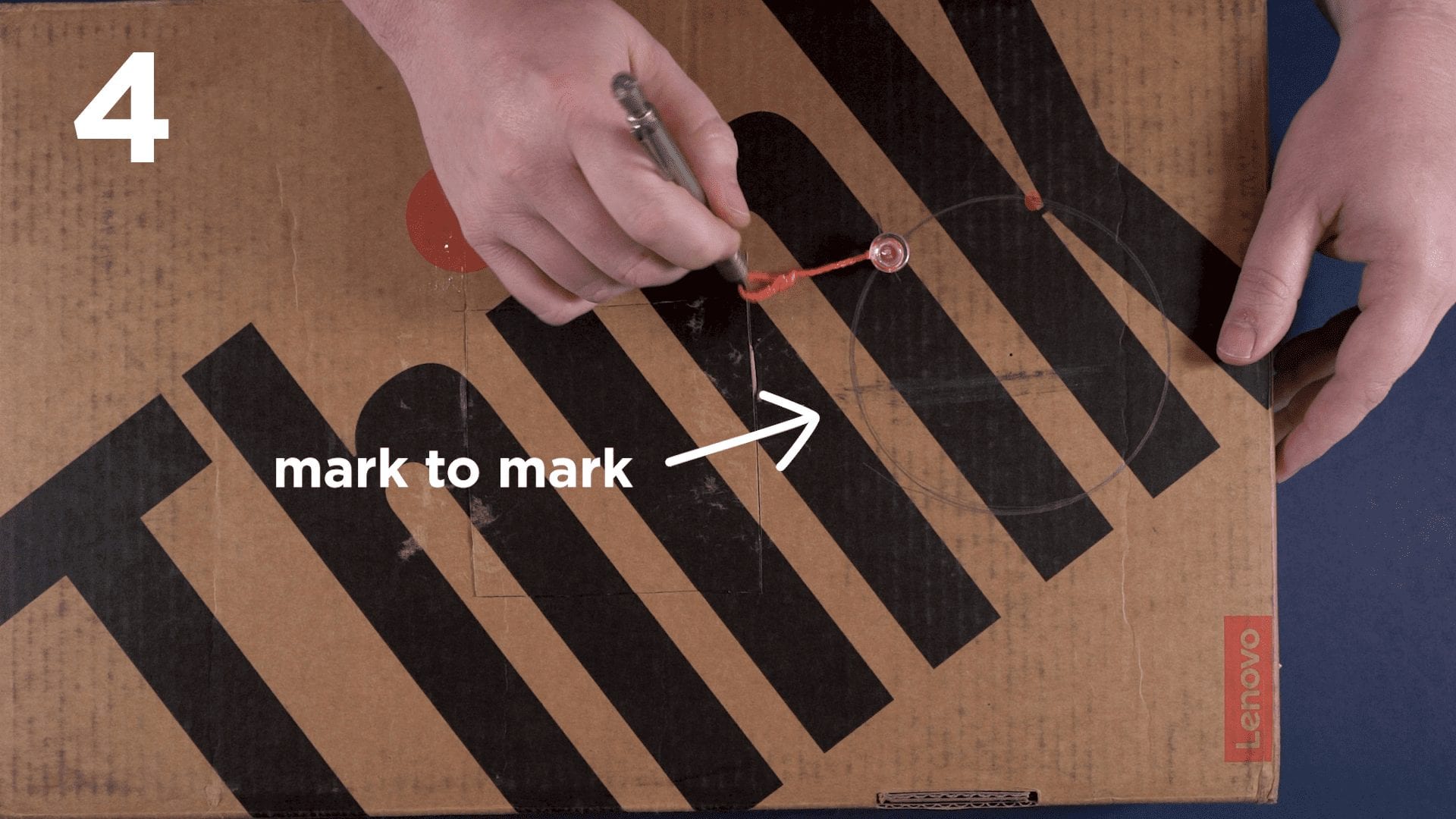Did you know hexagons are geometry’s powerlifters? On this episode of Stem At Home we’re going to test the strength of a hexagon as we build a truncated octahedron.

Step-by-Step Instructions
 Cut 10” of string and tie a knot in each end of the string.
Cut 10” of string and tie a knot in each end of the string.
 Put push pin in one knot on the string and pencil in the other.
Put push pin in one knot on the string and pencil in the other.
 Put the push pin in your piece of cardboard and use the pencil to draw a circle.
Put the push pin in your piece of cardboard and use the pencil to draw a circle.
 Insert pin in to hole and make mark on circle. Move pin around circle from mark to mark.
Insert pin in to hole and make mark on circle. Move pin around circle from mark to mark.
(we make this easy to understand in the video).
 Use your straight edge to draw out a hexagon from the marks on the circle.
Use your straight edge to draw out a hexagon from the marks on the circle.
 Cut out the hexagon with your scissors.
Cut out the hexagon with your scissors.
 Use the edge of the hexagon to draw out a square. Cut out square with scissors.
Use the edge of the hexagon to draw out a square. Cut out square with scissors.
 Use the cut-out square and hexagon to draw the pattern for your truncated octahedron on a poster board (don’t worry, we’ve got the pattern here for you to reference).
Use the cut-out square and hexagon to draw the pattern for your truncated octahedron on a poster board (don’t worry, we’ve got the pattern here for you to reference).
 Once you have cut out the complete pattern, use your straight edge to bend the corners.
Once you have cut out the complete pattern, use your straight edge to bend the corners.
 Use tape to hold together your truncated octahedron.
Use tape to hold together your truncated octahedron.
 Break out some thick science books and see how much your hexagon can hold.
Break out some thick science books and see how much your hexagon can hold.
Your instructor: Kevin Beck

A life-long science geek, Kevin is also the Resident Explainer of Things at Lenovo, which means he breaks down complex technology into simple subjects the rest of us can understand. Kevin currently lives in North Carolina with his wife.
Congrats on building your truncated octahedron. We hope you enjoyed learning about the strength of hexagons, a shape that informs our design process every day! Be sure to share yours #StemAtHome.
Did you know hexagons are geometry’s powerlifters? Join us as we test the strength of this shape with Lenovo’s explainer of things, Kevin Beck.
— Lenovo (@Lenovo) May 23, 2020
Then give it a try and tag your build with #STEMatHome! pic.twitter.com/cuSmgEB006
